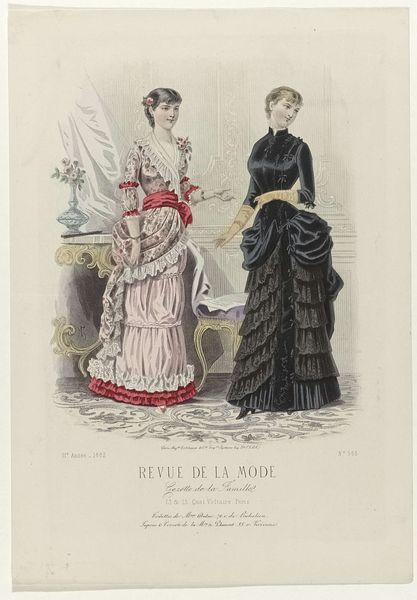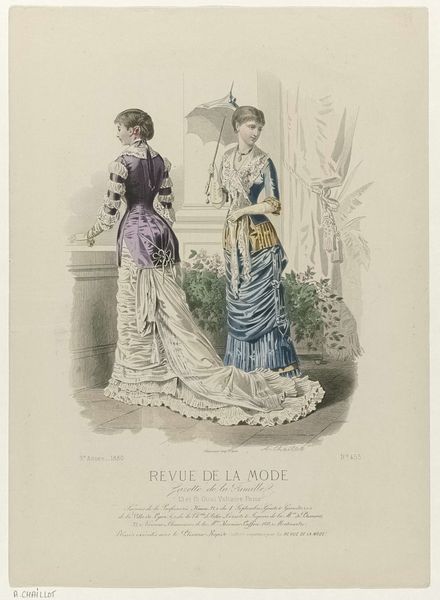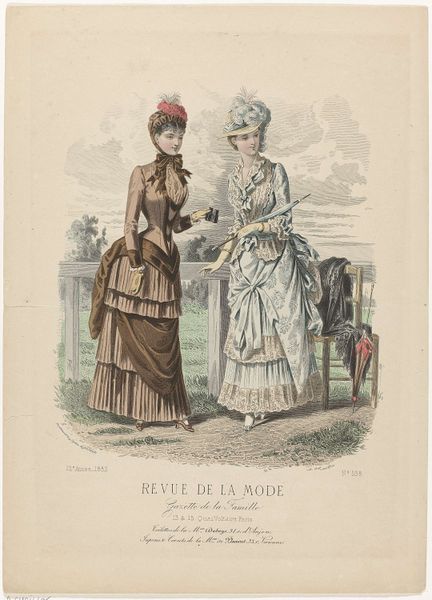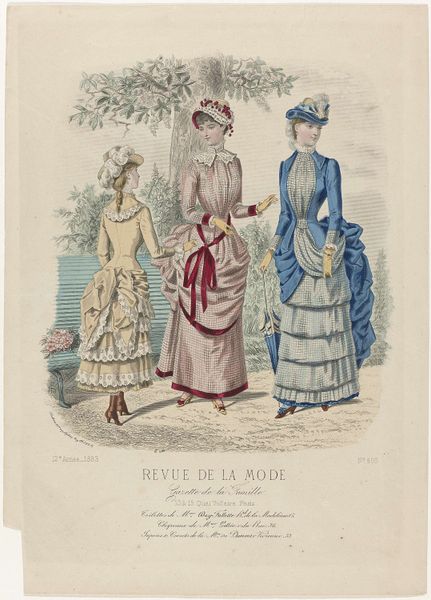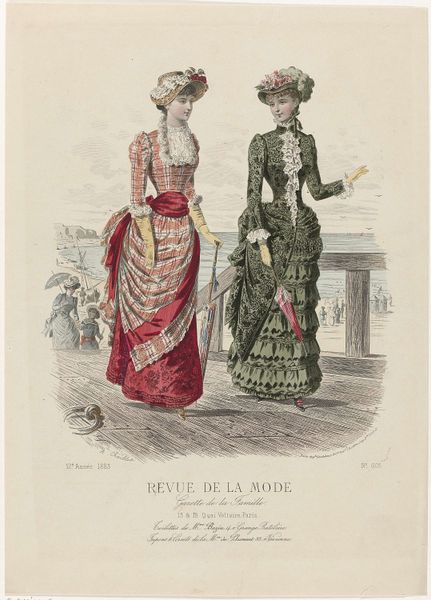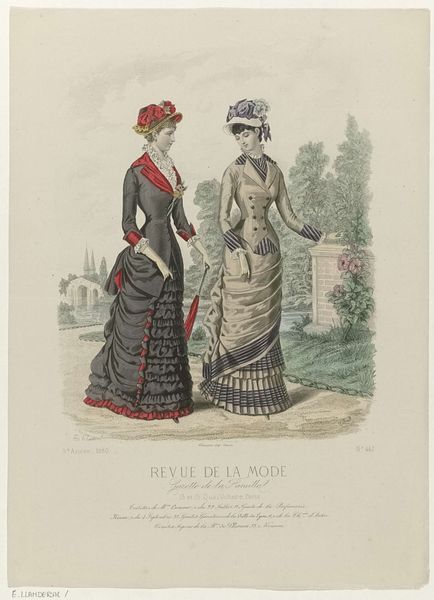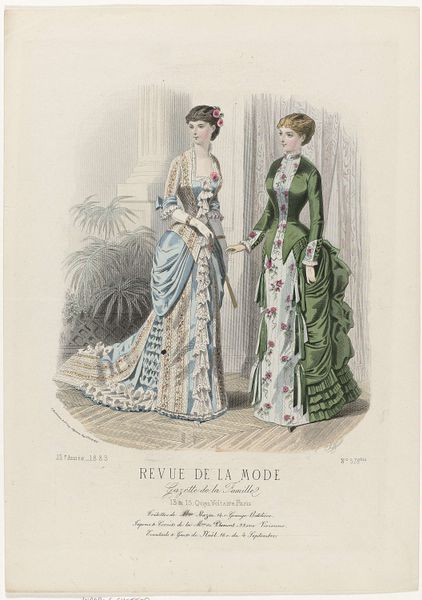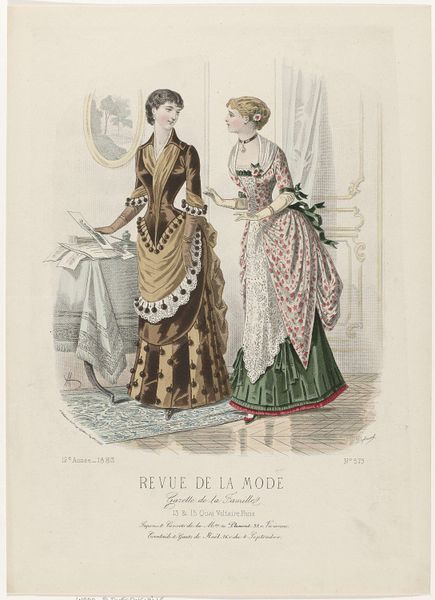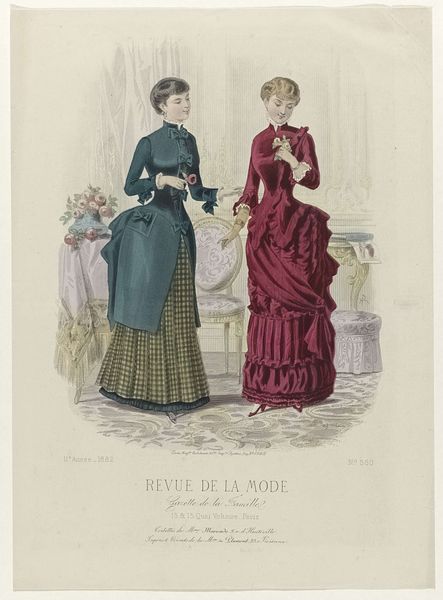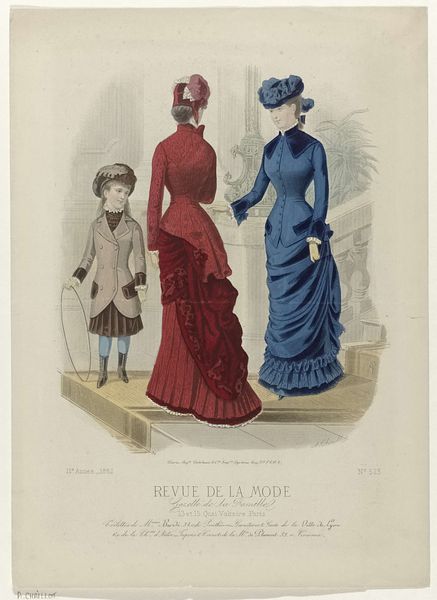
Revue de la Mode, Gazette de la Famille, dimanche 28 mai 1882, 11e année, No. 543: Toilettes de Mme Delannoy (...) 1882
0:00
0:00
mixed-media, print
#
portrait
#
mixed-media
# print
#
impressionism
#
genre-painting
#
dress
Dimensions: height 375 mm, width 270 mm
Copyright: Rijks Museum: Open Domain
This fashion plate, printed in Paris in 1882, showcases the latest styles using a labor-intensive process. Steel engraving allowed for fine lines and intricate details to be reproduced many times over. Each print was then hand-colored, bringing the garments to life with delicate washes. Consider the materiality of these clothes: the crisp cottons and wools, the sheen of silk ribbons, the delicate lace – each requiring skilled labor to produce. The arrangement of gathers, pleats and ruffles speaks to hours of hand-sewing, alongside the relentless march of the sewing machine. The steel-plate engraving process allowed for the democratization of fashion trends to a certain extent, with many of these magazines being printed and distributed. These were aspirational images, fueling the desires of a growing middle class. Yet, they also reflect the harsh realities of labor in the textile industry, dependent on the exploitation of workers. By examining the details of this print, we gain a deeper understanding of the complex relationship between fashion, consumption, and the social fabric of the 19th century.
Comments
No comments
Be the first to comment and join the conversation on the ultimate creative platform.

